
The Globally Harmonized System of Classification and Labeling of Chemicals (GHS) uses simple pictograms to identify the various hazards that can be present with chemicals. Since this system is used around the world, it was important to use the images rather than words, which would cause difficulty due to language barriers. All the pictograms are very simple black and white images that are contained within a red diamond.
Many chemicals can have a variety of different effects, in which case it is necessary to use two or more of these pictograms at the same time to alert people of the risk. There are a total of nine different pictograms, each representing a different type of hazard. Learning about each of them is essential for anyone working with or around hazardous chemicals.
 Health Hazard
Health Hazard
The first pictogram is of a person with a six pointed ‘star’ over the chest. It is designed to indicate that the chemical can cause some type of health hazard. This includes carcinogens, mutagenicity, reproductive toxicity, respiratory sensitizer, target organ toxicity, and aspiration toxicity.
Flame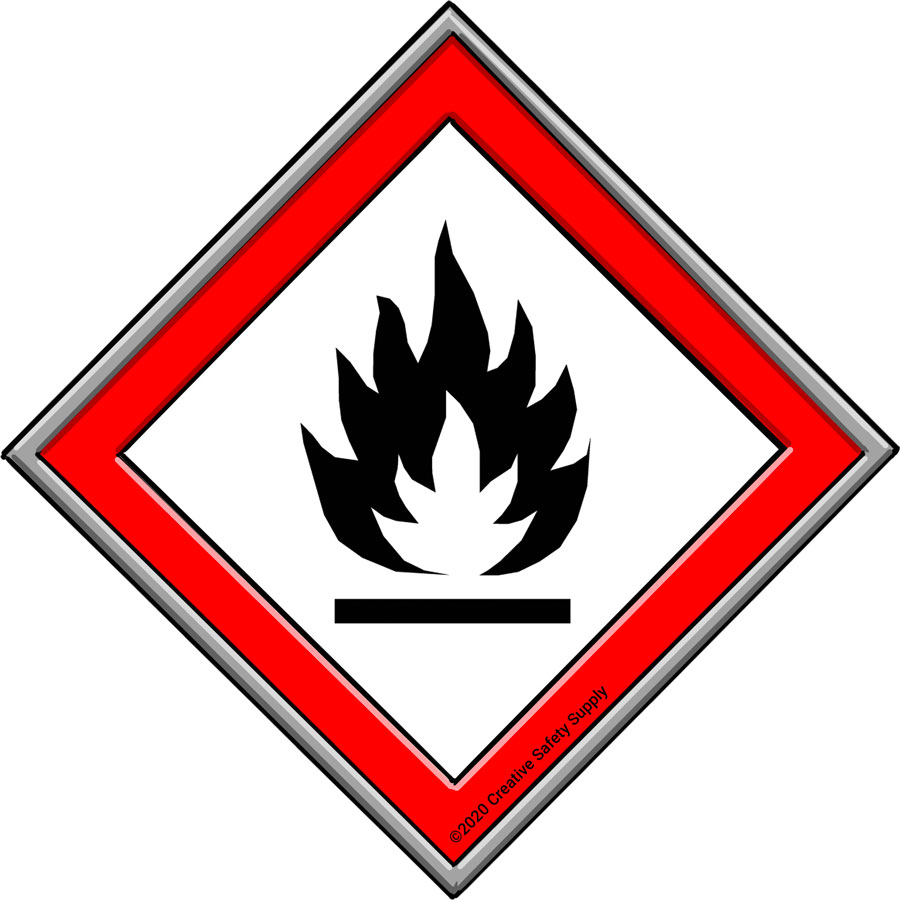
The simple image of a black and white flame is easy to identify and will indicate that one of several fire related hazards are present. The specific hazards include flammable chemicals, pyrophoric, self-heating chemicals, chemicals that emit flammable gas, self-reactive chemicals, and organic peroxides.
Exclamation Mark
The exclamation mark is a fairly straight forward symbol, and is used to indicate the presence of a skin or eye irritant, a chemical with acute toxicity, narcotic effects, respiratory tract irritant, and other risks. This pictogram is typically assigned to the least severe hazard classes with the only exception being skin sensitization.
Gas Cylinder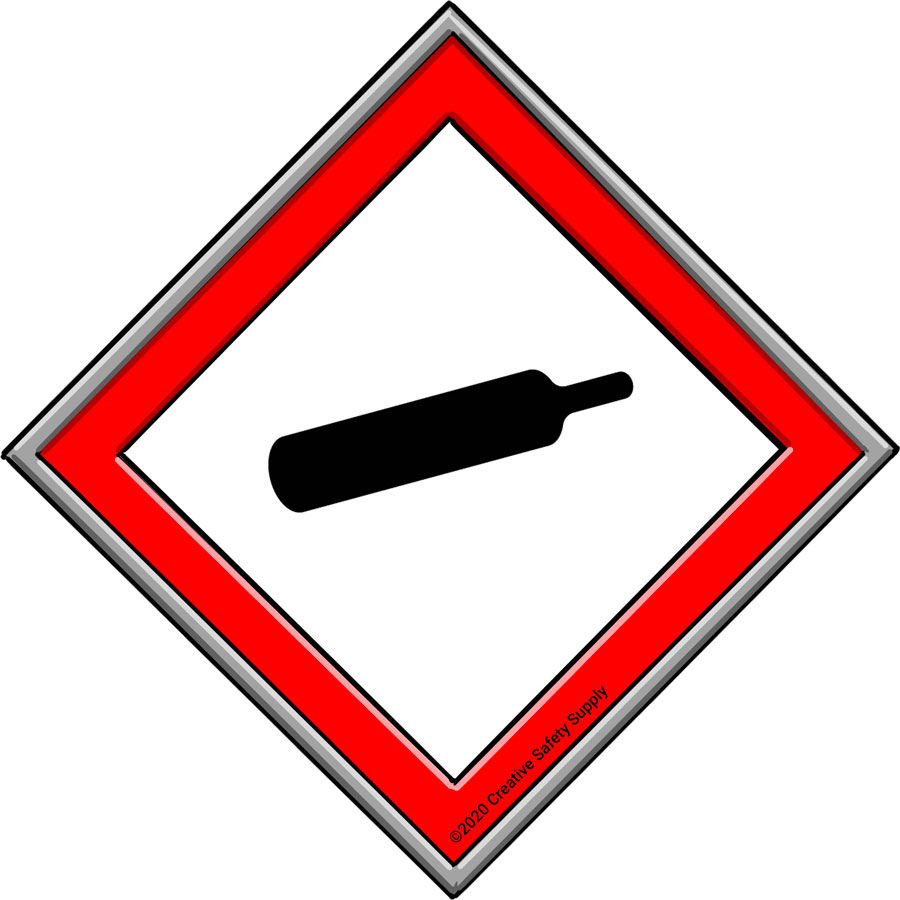
The basic image of a gas cylinder is used to indicate any type of gas that is under pressure, or which are liquefied and refrigerated. There is only one hazard classes that uses this pictogram — gases under pressure. Hazards presented by these products are related to the high pressure or cold temperatures.
Corrosion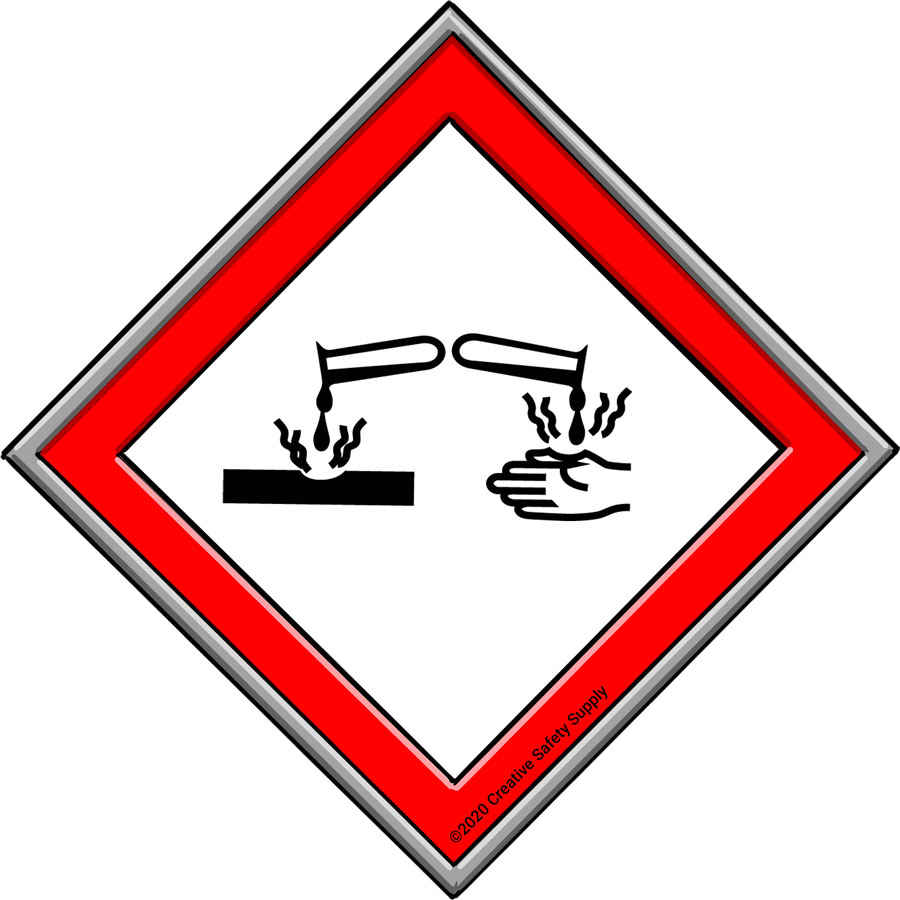
This pictogram has two test tubes pouring out a liquid. The first is pouring onto a black line used to represent metals, and the second is onto a hand. In both cases, there are lines to indicate that the liquid is burning through the metal and/or hand. Any chemical that is corrosive and can cause skin burns, eye damage, or eat through metals will require this label.
Exploding Bomb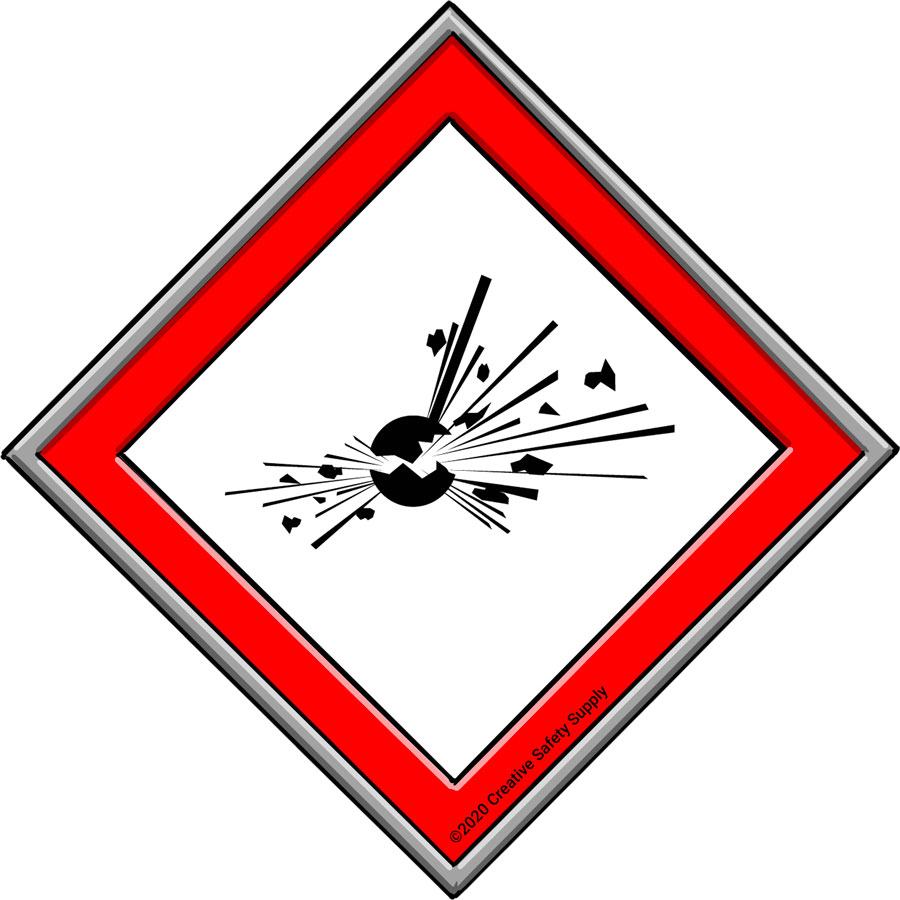
A broken black circle with lines and ‘shrapnel’ is used to represent an explosion. This pictogram is required when the chemical can cause an explosion, is self-reactive, or is an organic peroxide. They present severe fire and explosion hazards and can cause serious injury or property damage if not handled properly.
Flame over Circle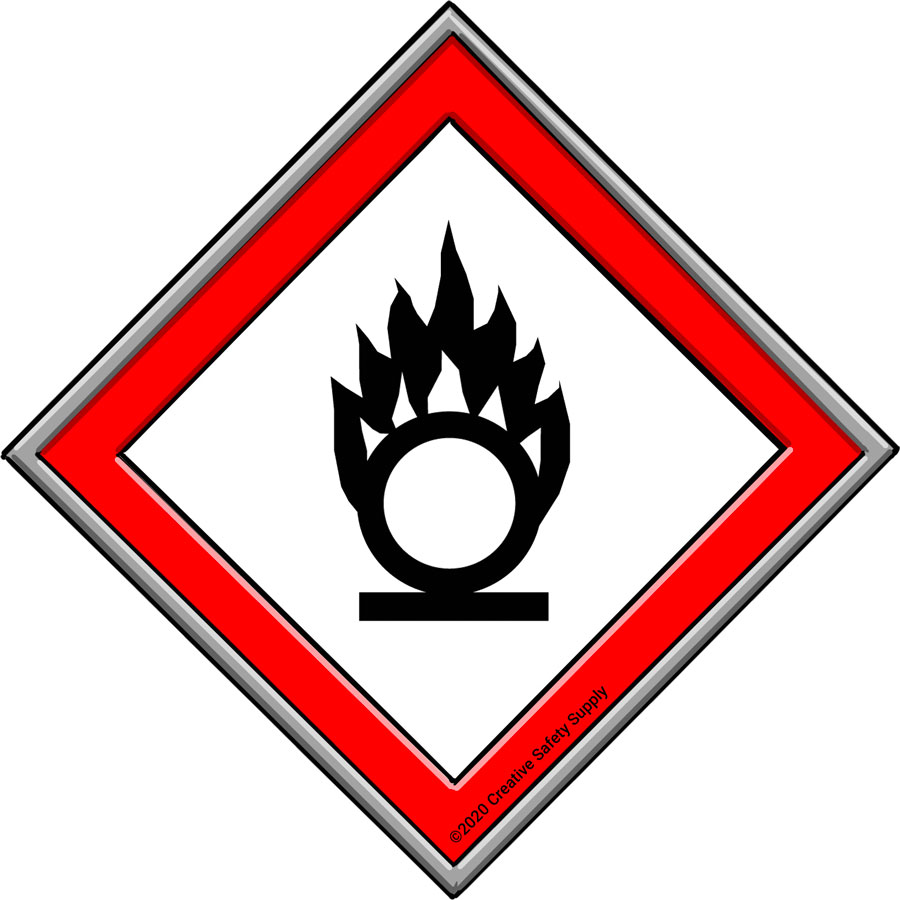
The flame over circle pictogram is used to label all oxidizers — liquid, solid, or gas — indicating an explosion hazard. It is important not to confuse this one with the simple flame pictogram mentioned above. Here, the "O" represents oxygen and the flame indicates an explosion or fire hazard if not stored or handled properly.
Environment
The pictogram itself has a tree without leaves and a dead fish to identify chemicals that can cause aquatic toxicity or harm to the environment. This is the only pictogram not explicitly required for compliance, but many suppliers voluntarily disclose these hazards by using this pictogram.
Skull and Crossbones
The traditional skull and crossbones symbol is used to identify chemicals that are acutely toxic, indicating exposure to the hazardous chemical can cause death or poisoning.
Similar Questions
- What is GHS labeling?
- Can GHS pictograms be black and white?
- How are toxic materials classified under GHS?
- What are GHS physical hazards?
- What are the Different Health Hazard Classes?
- Are GHS pictograms and hazard labels the same?
- Do All Hazard Classes and Categories Require a Pictogram?
- What is the GHS format?
- What are GHS Hazard Groupings?


